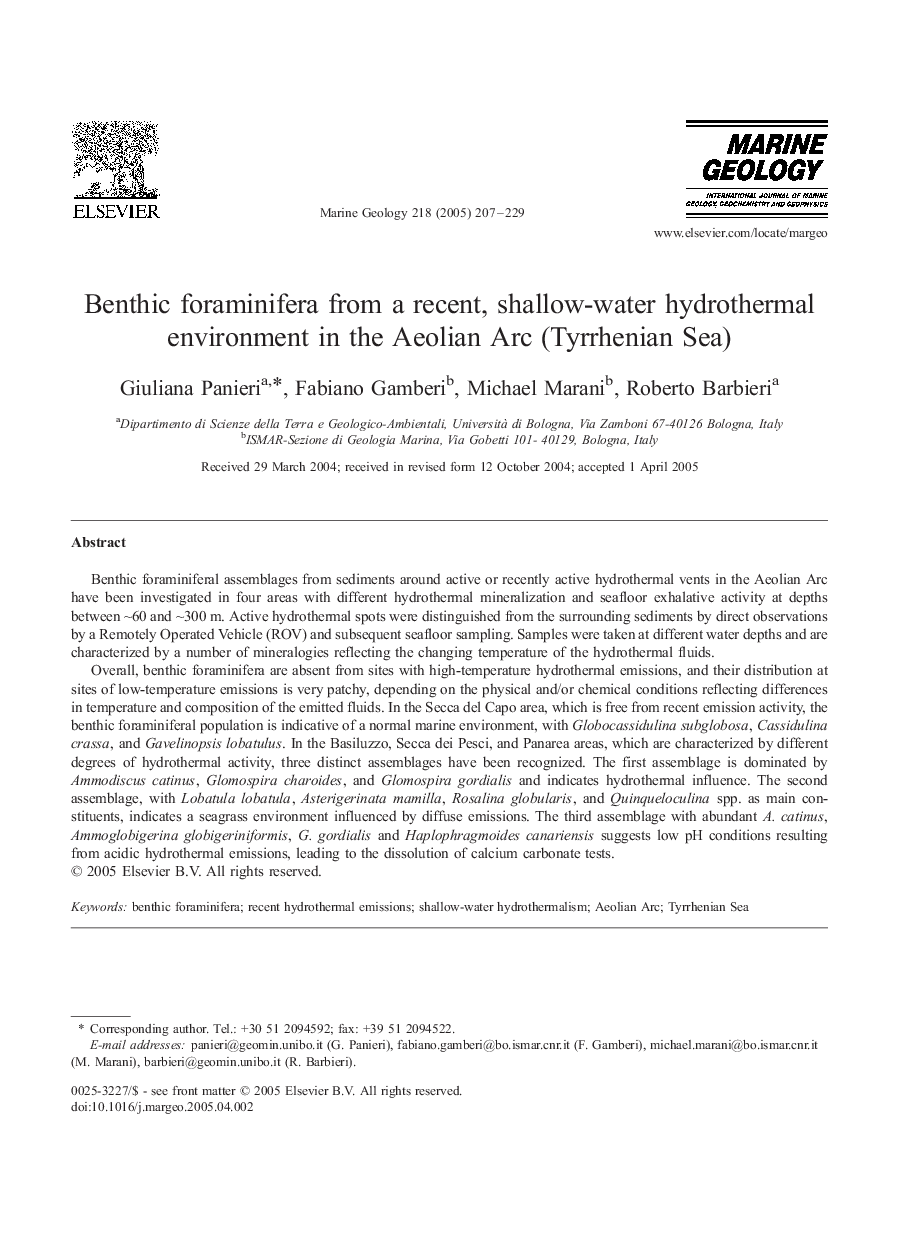| Article ID | Journal | Published Year | Pages | File Type |
|---|---|---|---|---|
| 9532646 | Marine Geology | 2005 | 23 Pages |
Abstract
Overall, benthic foraminifera are absent from sites with high-temperature hydrothermal emissions, and their distribution at sites of low-temperature emissions is very patchy, depending on the physical and/or chemical conditions reflecting differences in temperature and composition of the emitted fluids. In the Secca del Capo area, which is free from recent emission activity, the benthic foraminiferal population is indicative of a normal marine environment, with Globocassidulina subglobosa, Cassidulina crassa, and Gavelinopsis lobatulus. In the Basiluzzo, Secca dei Pesci, and Panarea areas, which are characterized by different degrees of hydrothermal activity, three distinct assemblages have been recognized. The first assemblage is dominated by Ammodiscus catinus, Glomospira charoides, and Glomospira gordialis and indicates hydrothermal influence. The second assemblage, with Lobatula lobatula, Asterigerinata mamilla, Rosalina globularis, and Quinqueloculina spp. as main constituents, indicates a seagrass environment influenced by diffuse emissions. The third assemblage with abundant A. catinus, Ammoglobigerina globigeriniformis, G. gordialis and Haplophragmoides canariensis suggests low pH conditions resulting from acidic hydrothermal emissions, leading to the dissolution of calcium carbonate tests.
Related Topics
Physical Sciences and Engineering
Earth and Planetary Sciences
Geochemistry and Petrology
Authors
Giuliana Panieri, Fabiano Gamberi, Michael Marani, Roberto Barbieri,
